List of Authors
>>About this blog
Recent blog post
|
[Apricot peony]
August 29, 2014 09:00
From August 2, in front of the inhabitant of a ward gallery of the Local Tenmonkan (Time Dome Akashi), a mini panel exhibition called "Chuo-ku Mono and Animal Memorial Monument Tour-What is the Tsuka" Tell "?" Is being held.

As the title of "Mini", it is a photo panel display of 12 memorial monuments in 8 places, so it feels small, but if there was such a thing in a place passing casually, I think that those who saw it will be surprised.
At the venue, there was an A4 flyer called "Chuo-ku Mono and Animal Memorial Monument Map", so I received it and immediately went to the nearby Namishi Inari Shrine.
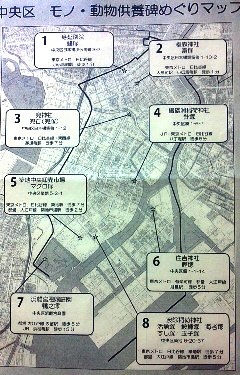
On the precincts, Ebitsuka and angler mound were erected as shown in the panel photo.
After reading the explanation on the panel, I can't help but think about not only the rarity, but also the lives of those living on the fish shore and the gratitude for the lives we take in our lives. I can't help it.
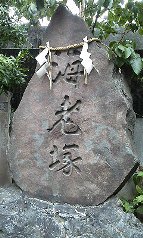 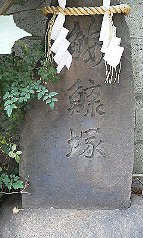 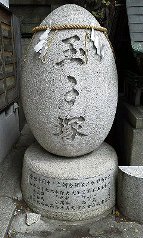
But speaking of fish banks, tuna.
What is the monument of tuna? I thought it was at the main gate where Tsukiji Market Station was located.
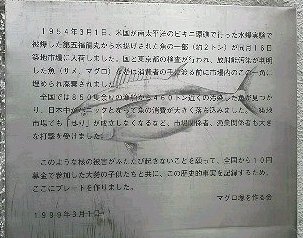
According to the map, there are other things that we usually take care of, such as "Katsuozuka" in Sumiyoshi-jinja Shirine in Tsukuda, "Harizuka" at Tetsuzu Inari Shrine, and "Unagizuka" at Minobubetsuin in Kodemmacho. There are memorial monuments for things and animals that are being done.
It's enough distance to walk or go around by bicycle.
The lingering summer heat crosses the pass, and it will be easier to spend from now on.
Wouldn't it be a good idea to see this panel exhibition and actually visit the memorial monument?
In addition, the mini-panel exhibition by the supporters of the local Tenmonkan will be held until September 28, but the theme will be changed thereafter, and it will be held four times in total until the end of March next year. .
For the time being, I'm looking forward to the "Ryusei Kishida and Ginza" exhibition scheduled from October 4th.
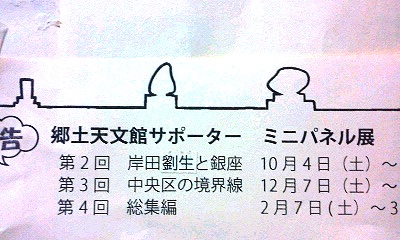
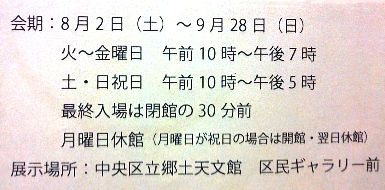
[Apricot peony]
July 30, 2014 09:00
It is very rare in St. Luke's International Hospital, but there are two galleries in the sense of therapy to patients proposed by Dr. Shigeaki Hinohara.
In addition to paintings such as pastel paintings, there are a number of works that heal people's hearts, such as handmade accessories and handicrafts such as accessories.
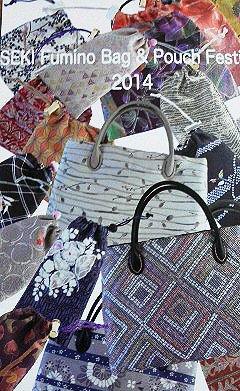 The first gallery next to the cafeteria on the first floor will be held from August 4 (Mon) to 9 (Sat). The first gallery next to the cafeteria on the first floor will be held from August 4 (Mon) to 9 (Sat).
"Seki Bunno Bag & Pouch Festival" will be held.
Seki's parents' house is Minori, a bag shop that used to be located in Ginza 7-chome.
The shop has closed its 98-year history and is currently selling online as a "Minori" brand, but she grew up on the top floor of a shop just on Ginza Street.
In the past, it was a multi-purpose house, so there were quite a few people who actually lived in the middle of Ginza, and she is such a genuine "Ginza kid".
Seki, who studied design at Joshibi University of Art and Design and Tokyo University of the Arts Graduate School, began to be interested in cloth and dyeing while at school, and this time he was entrusted with a large amount of dyeing samples from a dye shop introduced by an acquaintance. For this reason, we decided to hold a "bag & pouch festival" with original bags with a taste of "wa" full of Edo atmosphere.
There are obstetrics in the hospital, so cute items for small children are also available.
Also, depending on the color and pattern, there are some items that can be used stylishly by men.
Speaking of me, when I was young, the kimono became flashy and couldn't wear it, but I couldn't dispose of it because I had memories, and when I consulted Seki about what to do, the kimono was a parasol and the haori was a small bag I made it back.
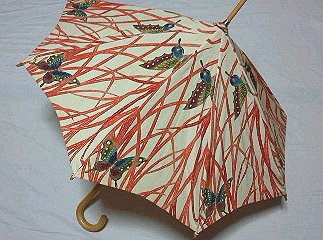 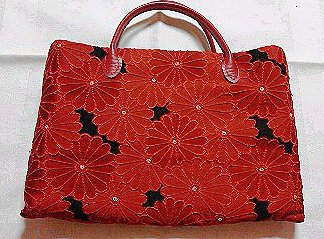
At that time, Mr. Seki said, "If you face the cloth carefully, the cloth will tell you what to do in the meantime."
In this guide, it was written that "I made the encounter between the sensibility and cloth cultivated in Ginza", but as the words implies, I think that a wonderful world of works will be unfolded.
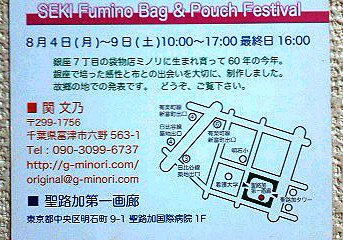
Seki Bunno Bag & Pouch Festival
From August 4 (Mon) to 9 (Sat)
From 10:00 to 17:00 (the last day ends at 16:00).
St. Luke's First Gallery
9-1, Akashicho, Chuo-ku
1F of St. Luke's International Hospital
[Apricot peony]
July 7, 2014 09:00
The west side of Ginza 1-chome is a very fun area to walk, with many antenna shops lined up in Hiroshima, Yamagata, Okinawa, Kochi, Ibaraki, Fukui, etc.
The other day, when I entered Ginza Brick Street from Sakura-dori St., I heard the lively music of Awa Odori.
When I thought something, I found a shop called Tokushima antenna shop "Emon Ade Tokushima".
It was said that the oven was opened in December last year, and local sake is lined up in the store, along with specialty products such as sweets, bamboo chikuwa, bare noodles, dried potatoes, etc. .
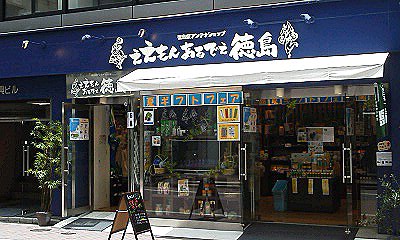
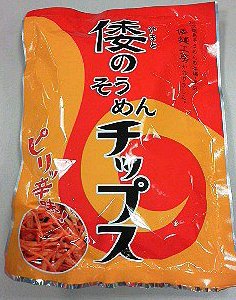
It's not so wide, but I've noticed something that looks delicious, but for the time being, I bought a popular item "Katsuten", which makes fish surimi like a cutlet.
When I was paying, the person who seemed to be a salaried worker in the neighborhood bought "Wa no Somen chips" and told me, "This is delicious and it's addictive."
That's why I bought this chips together.
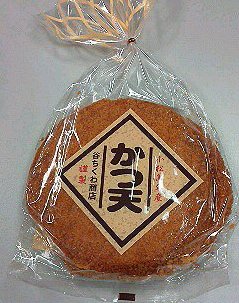
It seems that "Katsuten" can be fried with vegetables, but when heated with an oven toaster, it feels like a crispy and crispy ham.
It's a bit spicy, so it's perfect for beer.
Similarly, the noodles are also spicy and don't stop eating.
The place is an alley a little from a big street, but it is likely to be an indispensable shop for visiting antenna shops in the future.
[Apricot peony]
July 3, 2014 14:00
I often see recent subway stations incorporating designs related to the local specialties and history into their premises and platforms.
Whether you are commuting on a crowded train full of gyugy, or if you are sightseeing from afar, looking at such things, you may be able to take a break.
As the name implies, Tsukiji Market Station on the Oedo Line is right up the stairs of the station, and the Asahi Shimbun Tokyo Head Office, Cancer Center, and unexpectedly Shimbashi Enbujo are also very close.
If you enter the ticket gate, you want to convey the essence of Edo culture to the present, and there is a mural of folding screen paintings of four songs reproduced with art ceramic plates under the supervision of Japanese painter Tamako Kataoka.
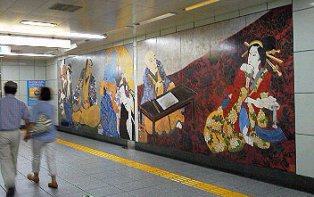 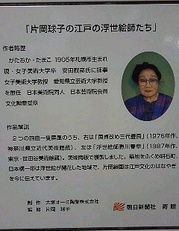
The right is "Kunisada Kaiyo Toyokuni", and the left is "Ukiyo-e artist Shunsho Katsukawa".
All of them are wonderful, recreating the stylish appearance of the time.
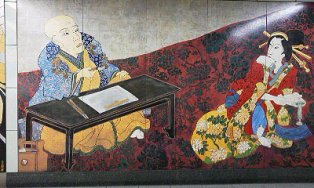 "Kunisada Reform, Toyokuni Midai," "Kunisada Reform, Toyokuni Midai,"
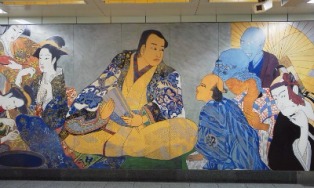 "Ukiyo-e artist Shunsho Katsukawa" "Ukiyo-e artist Shunsho Katsukawa"
When I go to Ryogoku, where the Edo Tokyo Museum is located, I often use this station, but every time I pass in front of this, I stop my feet.
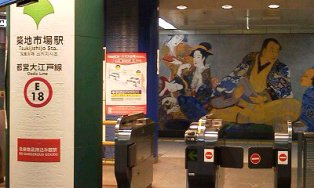
[Apricot peony]
June 11, 2014 14:00
It is not uncommon for paintings to be displayed in the hospital, but there are two galleries in St. Luke International Hospital, proposed by Dr. Hinohara.
I went to Shinji Yamagami's "Fun Illustration Exhibition of Animals, etc." held at the first gallery.
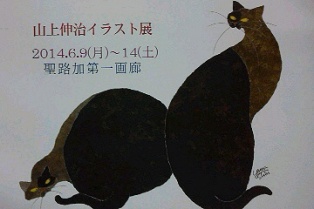
Mr. Yamagami says that he also has a rakugo party under the name of the Koza, "Sancho Tepanza", with valet Sancho Pansa appearing in Don Quijote.
It is a fun illustration exhibition according to the title, where you can get a glimpse of such an atmosphere everywhere.
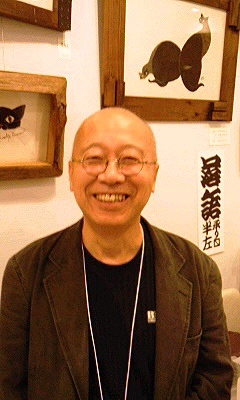 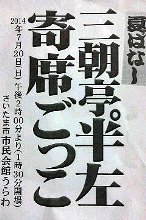
The illustrations of the deformed humorous animals are accompanied by a wit-rich sentence, and they are unintentionally stuck or bitterly laughing.
When I noticed, there was a person who was in front of the work.
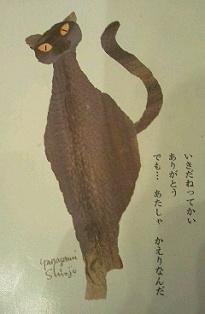 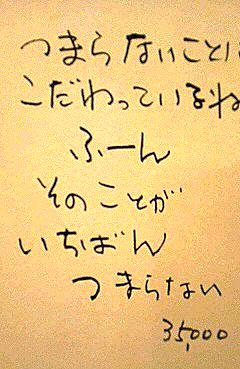 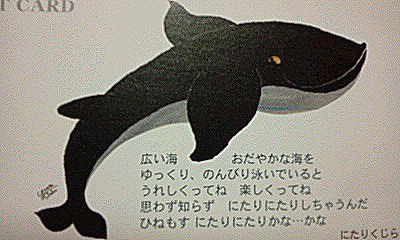
The picture frame of the work on display is wooden, handmade by Mr. Yamagami himself, whose slightly rugged and rugged feeling creates a unique warmth.
You said, "I'm told only about the picture frame," but it's probably because Mr. Yamagami's warm and wit-rich unique work and the atmosphere are perfect.
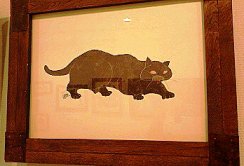 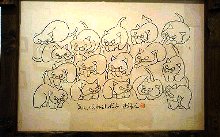
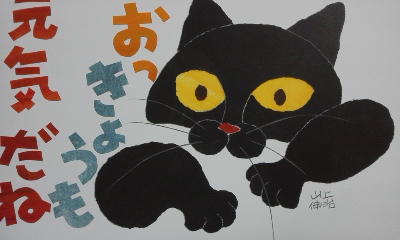 In addition, T-shirts and postcards were sold, so I bought a set of postcards called "I'm just a cat." In addition, T-shirts and postcards were sold, so I bought a set of postcards called "I'm just a cat."
I also liked the postcard sentence and illustration of "I'm fine" in this, so I'd like to send it to my friend immediately.
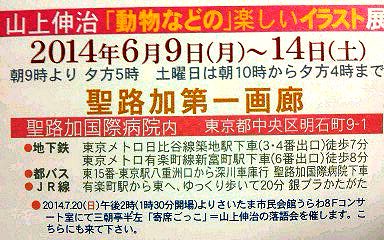 Shinji Yamagami "Fun illustration exhibition of animals, etc." Shinji Yamagami "Fun illustration exhibition of animals, etc."
June 9 (Mon)-14
From 9:00 in the morning to 5:00 in the evening
*Saturday from 10 a.m. to 4 p.m.
St. Luke's First Gallery
(in St. Luke's International Hospital)
[Apricot peony]
June 4, 2014 14:00
The other day, Ginzo was also introduced, but the Tsukiji Lion Festival, a festival at Tsukiji's Namiwa Inari Shrine, will be held from June 6 to 10.
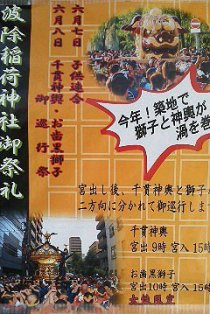 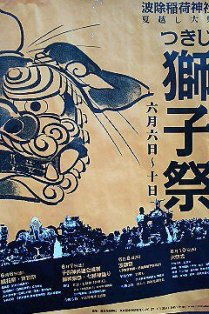
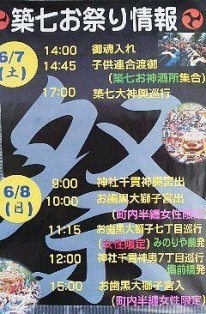
On the 8th, there will be a tour of the portable shrine Sennuki and the Lion.
Since it is not the main festival, the other lion is closed, but I think it will be wonderful if the "Senuki portable shrine" and "Otoguro Lion", where the shrine is held in one hour, are divided into two directions and wrapped around a uzu.
And the 7th during this festival is the annual "Nichikaichi" of Tsukiji Outer Market.
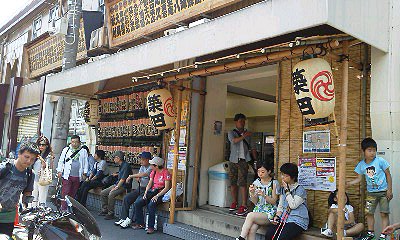

At the out-of-market information center "Platto Tsukiji", the lanterns of the festival are also displayed and the mood is quite exciting, but on the day of Nanikaichi, a lottery is held at this venue with a receipt of more than 2,000 yen, and the prize is the liquor used as the sacred wine of Haji Shrine.
The name is also this liquor named "Wazori", which is not for sale normally.
Recently, it is an out-of-office market where many people come by sightseeing bus or from abroad can see, but this weekend will be even more crowded than usual.
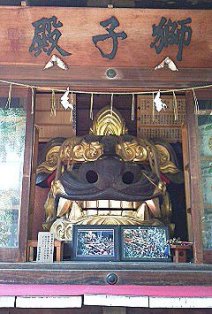 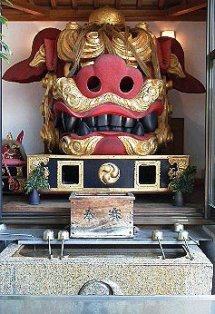
|
Links
|








 The first gallery next to the cafeteria on the first floor will be held from August 4 (Mon) to 9 (Sat).
The first gallery next to the cafeteria on the first floor will be held from August 4 (Mon) to 9 (Sat).







 "Kunisada Reform, Toyokuni Midai,"
"Kunisada Reform, Toyokuni Midai," "Ukiyo-e artist Shunsho Katsukawa"
"Ukiyo-e artist Shunsho Katsukawa"








 In addition, T-shirts and postcards were sold, so I bought a set of postcards called "I'm just a cat."
In addition, T-shirts and postcards were sold, so I bought a set of postcards called "I'm just a cat." Shinji Yamagami "Fun illustration exhibition of animals, etc."
Shinji Yamagami "Fun illustration exhibition of animals, etc."







